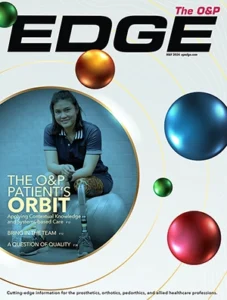Researchers conducted a randomized, controlled cross-over study to investigate the potential benefits of the C-Brace on the risk of falling. The study was conducted at 13 sites in the United States, Germany, Austria, and the Netherlands.
The participants were randomized to two orders of testing for three months with each orthosis: their traditional KAFO/C-Brace or C-Brace/their traditional KAFO. The primary outcome was balance assessed with the Berg Balance Scale (BBS). Secondary outcomes were falls, mobility, function, and quality of life.
In total, 149 participants were enrolled, 102 individuals were randomized, and 76 participants completed the protocol.
With the C-Brace, the BBS improved by 3.3 ± 6.3 points and significantly fewer participants presented BBS scores indicative of increased fall risk (16 versus 36). Mean falls reduced from 4.0 ± 16.8 to 1.1 ± 3.3. The study’s authors concluded that outcomes for function, mobility, and quality of life showed significant improvements with the C-Brace. They attribute the improvements in fall risk and mobility to the stumble recovery and controlled knee flexion during weight bearing.




